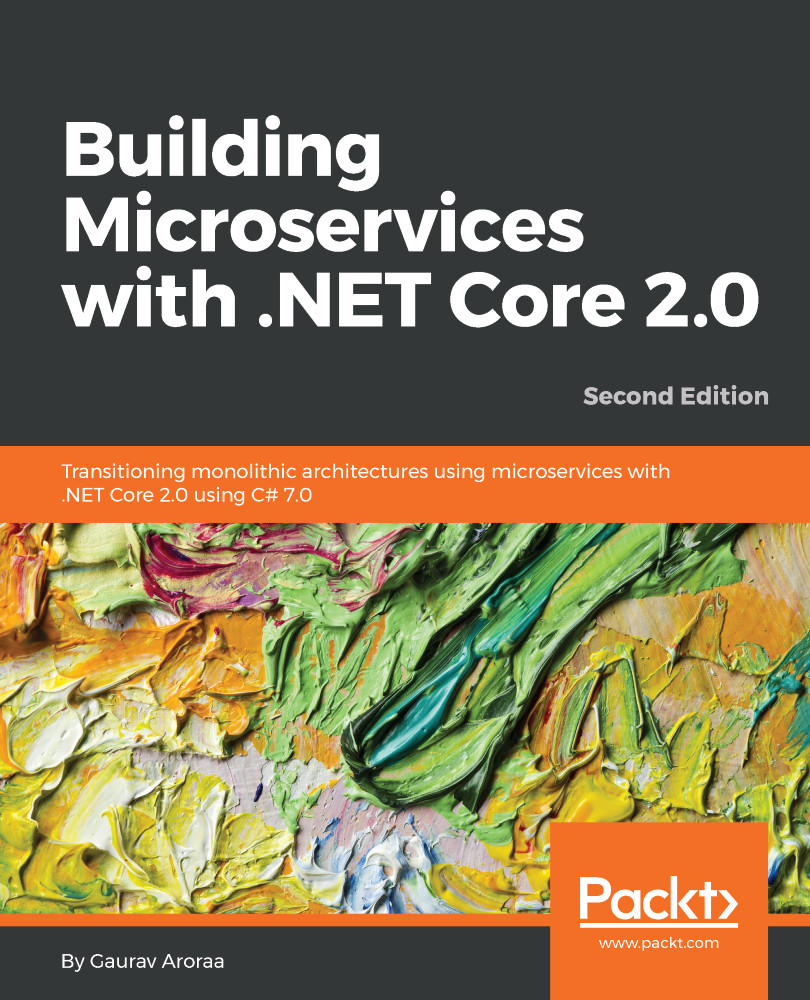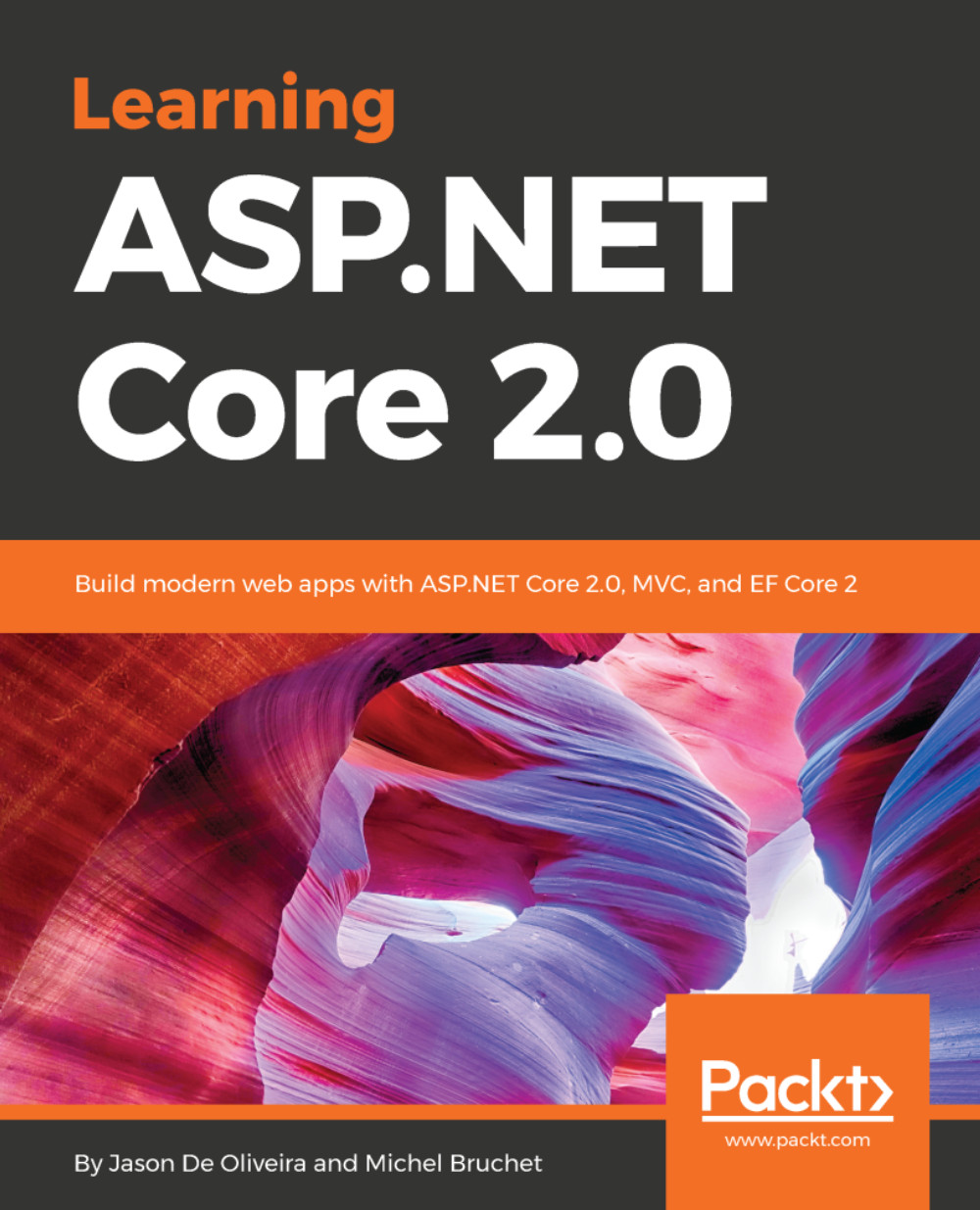Service, in this case, is an essential concept of SOA. It can be a piece of code, program, or software that provides functionality to other system components. This piece of code can interact directly with the database or indirectly through another service. Furthermore, it can be consumed by clients directly, where the client may be a website, desktop app, mobile app, or any other device app. Refer to the following diagram:
Service refers to a type of functionality exposed for consumption by other systems (generally referred to as clients/client applications). As mentioned earlier, it can be represented by a piece of code, program, or software. Such services are exposed over the HTTP transport protocol as a general practice. However, the HTTP protocol is not a limiting factor, and a protocol can be picked as deemed fit for the scenario.
In the following image, Service - direct selling is directly interacting with Database, and three different clients, namely Web, Desktop, and Mobile, are consuming the service. On the other hand, we have clients consuming Service - partner selling, which is interacting with Service - channel partners for database access.
A product selling service is a set of services that interacts with client applications and provides database access directly or through another service, in this case, Service – Channel partners. In the case of Service – direct selling, shown in the preceding image, it is providing functionality to a web store, a desktop application, and a mobile application. This service is further interacting with the database for various tasks, namely fetching and persisting data.
Normally, services interact with other systems via some communication channel, generally the HTTP protocol. These services may or may not be deployed on the same or single servers:
In the preceding image, we have projected an SOA example scenario. There are many fine points to note here, so let's get started. First, our services can be spread across different physical machines. Here, Service - direct selling is hosted on two separate machines. It is possible that instead of the entire business functionality, only a part of it will reside on Server 1 and the remaining on Server 2. Similarly, Service - partner selling appears to be having the same arrangement on Server 3 and Server 4. However, it doesn't stop Service - channel partners being hosted as a complete set on both the servers: Server 5 and Server 6.
A system that uses a service or multiple services in a fashion mentioned in the preceding diagram is called SOA. We will discuss SOA in detail in the following sections.
Let's recall the monolithic architecture. In this case, we did not use it because it restricts code reusability; it is a self-contained assembly, and all the components are interconnected and interdependent. For deployment, in this case, we will have to deploy our complete project after we select the SOA (refer to the preceding diagram and subsequent discussion). Now, because of the use of this architectural style, we have the benefit of code reusability and easy deployment. Let's examine this in the wake of the preceding diagram:
- Reusability: Multiple clients can consume the service. The service can also be simultaneously consumed by other services. For example, OrderService is consumed by web and mobile clients. Now, OrderService can also be used by the Reporting Dashboard UI.
- Stateless: Services do not persist any state between requests from the client, that is, the service doesn't know, nor care that the subsequent request has come from the client that has/hasn't made the previous request.
- Contract-based: Interfaces make it technology-agnostic on both sides of implementation and consumption. It also serves to make it immune to the code updates in the underlying functionality.
- Scalability: A system can be scaled up; SOA can be individually clustered with appropriate load balancing.
- Upgradation: It is very easy to roll out new functionalities or introduce new versions of the existing functionality. The system doesn't stop you from keeping multiple versions of the same business functionality.
 United States
United States
 Great Britain
Great Britain
 India
India
 Germany
Germany
 France
France
 Canada
Canada
 Russia
Russia
 Spain
Spain
 Brazil
Brazil
 Australia
Australia
 Singapore
Singapore
 Canary Islands
Canary Islands
 Hungary
Hungary
 Ukraine
Ukraine
 Luxembourg
Luxembourg
 Estonia
Estonia
 Lithuania
Lithuania
 South Korea
South Korea
 Turkey
Turkey
 Switzerland
Switzerland
 Colombia
Colombia
 Taiwan
Taiwan
 Chile
Chile
 Norway
Norway
 Ecuador
Ecuador
 Indonesia
Indonesia
 New Zealand
New Zealand
 Cyprus
Cyprus
 Denmark
Denmark
 Finland
Finland
 Poland
Poland
 Malta
Malta
 Czechia
Czechia
 Austria
Austria
 Sweden
Sweden
 Italy
Italy
 Egypt
Egypt
 Belgium
Belgium
 Portugal
Portugal
 Slovenia
Slovenia
 Ireland
Ireland
 Romania
Romania
 Greece
Greece
 Argentina
Argentina
 Netherlands
Netherlands
 Bulgaria
Bulgaria
 Latvia
Latvia
 South Africa
South Africa
 Malaysia
Malaysia
 Japan
Japan
 Slovakia
Slovakia
 Philippines
Philippines
 Mexico
Mexico
 Thailand
Thailand















